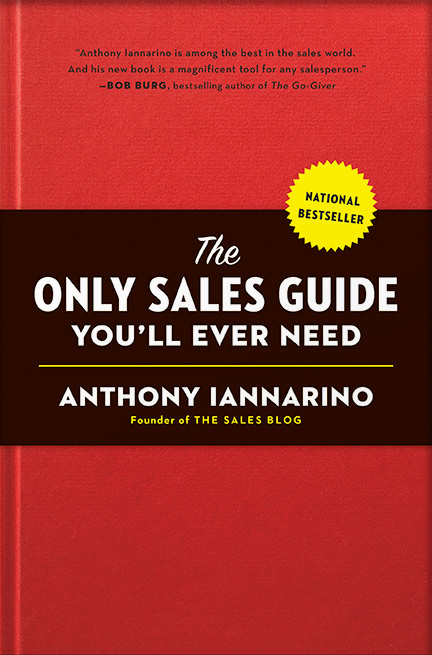The Gist:
- The true nature of consultative sales is about providing the client an understanding the context of how to make good decisions.
- Insights provide clients with an epiphany, allowing them to see the nature of their problem and their decision.
- Effective insights produce value in several ways, dealing with assumptions, implications, mistakes, and providing context.
In 2011, Matt Dixon and Brent Adamson published a book titled The Challenger Sale, giving a name and conceptual framework to a form of consultative sales, an idea they called “insight-based selling.” Like many books on professional sales, it was widely read but few readers actually adopted these tools. The concepts are easily understood but can be difficult for many to execute, especially since doing so requires a challenging mix of character traits, acumen, and experience. The book is worth studying, in any case. Brent also went on to co-write (with Nick Toman) the foreword to my second book, The Lost Art of Closing. Matt, Brent, and Nick all do exceptionally good work and are worth following.
My Journey in Sales
My journey into using insights to make change started ten years before The Challenger Sale popularized “insight-based selling.” I had realized that my clients were operating from a set of assumptions that were at odds with reality. Desperate to erase and replace those assumptions, I prepared for a meeting with a huge client who was struggling to produce the results they needed because they believed that labor was both abundant (it wasn’t) and cheap (it wasn’t, but they were).
To provide them with a better set of assumptions, I collected all of the data, articles, and clippings I had collected on the topic over the past two years. I assembled an oversized slide deck, intending to bludgeon my contacts with the reality that was already making the results they wanted impossible. Over the course of thirty minutes, I shared a picture of the client’s reality that they had not yet recognized—without intervention, they might never have done so. By the end of our meeting, the client had committed to spending an additional two million dollars annually to produce the results they needed.
From that day forward, I no longer carried a slide deck about my company or our solutions, a slide deck designed to answer “why us?” with little to address the question “why change?”
The True Nature of Consultative Sales
The true nature of consultative sales is providing advice about the business decisions your contacts are making. This outcome is made possible by conversations that allow your client to understand the context and understand better how to make that decision. Despite all the hoopla about buyers spending all of their time researching, completing the most significant part of their decision before speaking to a salesperson, the truth is that they are generally missing the context that would inform a good decision.
Many salespeople and sales organizations incorrectly believe that selling with insights just means having the insights without using them to educate the client. The actual competency here is insight transfer: sharing what you’ve learned to help your clients change. In large part, attempts at consultative sales fail because the salesperson doesn’t successfully transfer the insights to their clients.
The Power of an Insight
It’s easy to overestimate the effect of simply sharing insights when it comes to making real change. The insights are necessary but not sufficient for change. For an insight to work, the client has to experience the “aha” moment where they learn something about themselves, the nature of their reality, and the implications it has for their decisions and their results.
The value of your insights is their ability to provide your client with an epiphany, causing them to recognize a heretofore unavailable reality. It’s like they’ve been staring up at the night sky, but all they can see is points of light until you lend them your telescope and start teaching them about constellations and nebulas. Your goal is to give them a higher-resolution lens to see the nature of their problem and their decision.
Few things are more disappointing than wanting something good for someone that they don’t want for themselves. The fact that you better understand your client’s decision and why they should follow your advice doesn’t mean that your client can see what you can see. You have to open up the aperture and let in a lot more light.

Why Insights Are Necessary to Value Creation
When you enable your client to make the best decision for their business, you are creating value for them, and more than likely, creating a strong preference to buy from you. Effective insights can produce value in several ways.

Assumption Obliterator:
One value of insights is that they give you a way to deal with your client’s assumptions, which are often based on the client’s limited experience. Because you sell what you sell every day, you have more significant experience in helping your client recognize the factors that will lead to better results or threaten their initiative. Insights allow you to share information that can reshape their primary assumptions.

Implication Identifier:
Poor decisions imply poor results. One of the poor decisions clients make is to leave problems unaddressed so long that it harms their results and requires more heavy lifting to turn things around. You can help them avoid this pain by sharing the implications of not changing—or of changing too late. An aspiring trusted advisor must endeavor to prevent their clients from negative consequences that they could avoid by acting sooner.

Mistake Eraser:
Because you have the advantage of watching different companies make different decisions, you get to witness companies making mistakes, often because their assumptions are either invalid or expired. Your ability to transfer your insights to your client can prevent them from making the mistakes others have already made, learning the lesson the easy way.

Context Constructor:
Your ability to construct a clearer view of reality by providing greater context around the client’s challenge, the factors that will matter most to their success, provides them with new beliefs and new potential, including new decisions. None of us know what we don’t know. You create value when you help your client make the right decision for their business and their results.
When done well, these tools allow you to transform your insights into your client’s insights, helping them change, make good decisions, and reach the better results they need.
Do Good Work:
- Work on recognizing the difference between having insights and transferring insights
- Create a higher-resolution lens in your ongoing sales conversations, allowing them to see the nature of their problem.
- Master the various ways insights can provide value to your clients.











.jpg?width=768&height=994&name=salescall-planner-ebook-v3-1-cover%20(1).jpg)


